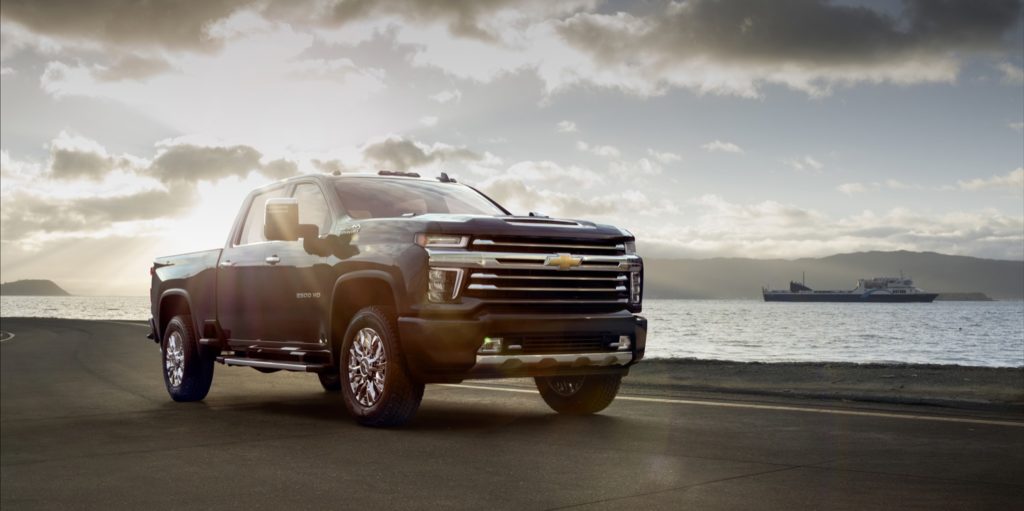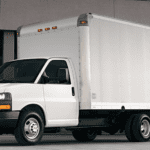Today on AutoInfluence, we touch on one of the most oft-debated topic in recent years: the six-figure pickup truck (as often discussed in current auto news headlines).
At the risk of using a phrase out of context to mark the passage of time, we were living in a pre-9/11 world when Ford first served up the King Ranch version of the F-150, effectively creating the luxury pickup segment. Claiming that such offerings, including the Lariant and King Ranch versions to follow were simply their attempt to meet the needs of the customers, no-one was surprised to see the trend follow. At the time, it felt fresh and aspirational, like any luxury-segment offering does. But time and evolution are a fickle mistress.
If I remember correctly it was September of 2017…a simpler time…when the game changed forever. I was reading an article about the upcoming Ford F-450 Super Duty Limited, an article where buzzword terms like ‘luxe truck’ were being thrown around with almost reckless abandon. Considering that, at the time, the F-450 Super Duty Limited had a starting MSRP of $87,100 it was clear that truck makers were catering to an entirely different demographic than the common laborer they had once built their collective reputation on the shoulders of. Features included a 360-degree camera, LED headlights, adaptive cruise control and adaptive steering as well as a panoramic sunroof. And at that price point, it was plain to see just how simply we had finally could find ourselves north of the $100,000 mark. After all, there are taxes and fees…plus options like massaging seats can add up quickly. But, at that time, this particular variation of the F-450 stood alone as the most expensive option our there, with very few challengers. A distinction which wouldn’t last very long.
Suddenly RAM was serving up the heavy-heavy-duty 3500 Laramie Longhorn Southfork edition. A 4×4 dually with a mega cab and the option of a Cummins turbodiesel set the start price well above $83,110 once shipping charges were factored in. That price point was elevated further with the 3500 Laramie Limited Tungsten Edition, which started just over $85 grand. And according to RAM officials at the time, they couldn’t “keep them in inventory” which in RAM’s mind was proof that “customers [were] continuing to look for more” and that they had a responsibility to “listen to [their] customers”. As a RAM enthusiast, I couldn’t help but feel like I just got kicked out of a club I’d been a member of for years.
I can recall both Ford and FCA claiming that they saw no foreseeable ceiling on how high truck pricing could go while still retaining its appeal and – to be honest – I felt inclined to call “bullshit”. Having grown up in a working class truck family, I get the appeal of modern amenity-focused trucks, but I have to imagine that it’s a relatively niche audience willing to step beyond the ‘covet phase’ and cough up a hundred-grand on a vehicle they’re less likely to use for any kind of legitimate utility outside of, possibly…towing?
And while I’ve never been much of a GM guy, all of the above left me with a genuine sense of respect for the brand – whose line-topping offering at the time were loaded dually 3500 variants of the Silverado and Sierra which passed just over the $80 grand line. It felt like they were leaving well-enough alone, uninterested in taking things further. The same could be said for the likes of Toyota and Nissan who were serving up legitimate contenders, albeit with a much more controlled price point. And while the latter two automakers have done an admirable job at controlling cost, in the mind of a working class dude like myself – headlines and new model year offerings seem to be doing a great job of making feel like I’m in the minority.
But how is that possible? In 2010, less than a decade ago, the average price of new model year pickup fell in somewhere between $32,557 and $44,181. As of this point in 2019, that number has risen to around $45,260. But if that’s the median price, we’re still basically talking about doubling the price-tag to close in on $100,000.
And now, even the once-resistant GM is now throwing their hat into the ring with the Silverado HD’s new High Country trim package, which pushes that six-figure boundary. Sure, the truck segments seems to be defying the laws of causality in a world where automotive sales have been declining, dropping 3% in the first half of 2019 alone. And of course, trucks offer a fatter profit margin than other segments do. These two factors along are enough to understand why automakers like GM are ready to pony up and invest in their truck manufacturing plants.
But the goal to push the median price of a truck higher and higher, feels pennywise and pound foolish. We’ve seen the effects of one-upmanship in the automotive landscape, and it’s a slippery slope. The Silverado already lost its 2nd place seating to the RAM 1500 in Q1 so, whether or not the slip was a fluke, one has to wonder if the focus on high-end offerings is really worth it. I heard one analyst point out the lack of risk to GM, stating that there’s “no real harm if it doesn’t work” and that “if it succeeds, it would earn a tidy profit”.
And I guess that makes sense, but it also sends a cloudy message to the general consumer at a time when GM has found themselves burdened with criticism for being out of touch. Sure, lifestyle buyers will eat this sort of truck up. But I worry about those of us who buy a truck to do the jobs that simply need doing. With that steady climb in median price, how long is it until we’re expected to cough up more than we can possibly afford to pay.
What do you think about the increasing cost of both traditional models and special edition trucks out there. Leave your comments below, we’d love to hear what you have to think.
This has been AutoInfluence. Thanks for listening.




